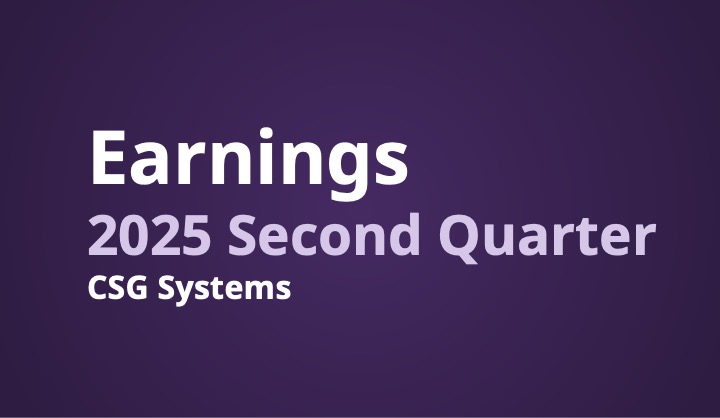Consumers have plenty of options when it comes to brands they do business with. If dealing with a business is a hassle, they’ll move on to a different one. A recent study found that 80% of U.S. customers who churned did so because of dissatisfying customer service.
People expect scheduling, tracking and completing a medical or field service appointment to be as easy as getting an Uber or tracking their pizza order. With Uber and Dominoes, you know exactly where your driver is and when they will arrive. Wouldn’t it be nice to have that same visibility with the cable guy?
Customers apply this expectation of up-to-the-minute communication to almost any industry. They want timely appointment reminders and real-time notifications when their doctor or technician is delayed. Insurance customers expect updates on claim processing and repair timelines, while bank customers seek guidance and status updates when applying for a loan.
To meet customer expectations, organizations must communicate effectively about appointments and services. That can be easier said than done. Keep reading to discover how to deliver exceptional appointment and service experiences.
Poor Service Damages Customer Experience and Loyalty
CX quality among U.S. brands declined in 2024 for the third consecutive year. Forrester attributes this to several factors, including brands’ inability to provide seamless customer and employee experiences.
Many businesses fail to deliver customer experiences that are easy, effective (e.g., meet their needs), and produce positive emotions—the three components of CX quality, according to Forrester. Across industries, 43% of customers switched products or canceled a contract due to poor customer service.
Traditional Appointment and Service Communications Fall Short
Service experiences span multiple touchpoints and many moving parts. Even when the actual service is excellent, the communications around it (or lack thereof) can sabotage the experience for customers as a whole. Too often, appointment and service communications suffer these shortcomings:
They’re repetitive. Sending too many appointment reminders can backfire, increasing the likelihood of no-shows or unnecessary rescheduling. People who receive five reminders through email, text and phone—after they’ve confirmed the appointment—may feel annoyed and overwhelmed, causing them to tune out future communications from their provider. Bank customer satisfaction declines significantly after the second request for supporting materials for a mortgage application, but lenders contact customers an average of three times to request additional documents.
They lack coordination between systems or teams. When a cable/broadband subscriber is waiting for a technician to visit their home to set up fiber internet, the last thing they want to see is a promotional text from that provider trying to upsell them on a high-speed Wi-Fi deal. But this irrelevant, off-key communication happens all the time. The team sending out the promo offers doesn’t know when customers are in the midst of a product or service setup. Uncoordinated communication causes frustration that businesses don’t even know about.
They don’t provide consistent status updates—or any at all. Internet service providers may not notify customers that the technician is running three hours late. A healthcare system may not notify a customer they are overdue for a consultation. Banks and insurance companies are often slow to inform customers about missing documentation for loan applications or claim submissions, and they neglect to share the timeline for decision-making or completing repairs. Radio silence frustrates customers. Count on them to fill that silence with costly calls for status updates.
Here are three examples of appointment and service management gone wrong:
- When you call to schedule your annual checkup, the clinic’s phone number isn’t working. After searching online and checking your health insurance provider directory, you find a different number. You call and wait on hold for several minutes, listening to the same canned message on an endless loop. By the time you hear “Thank you for your patience” for the eighth time, it’s wearing thin. When you finally speak with the scheduler, you learn that the physician is no longer seeing patients at the clinic location you’ve visited for years. The clinic could have prevented this time-wasting experience by notifying patients that the physician’s phone number, clinic locations and schedule had changed, while proactively informing the patient they are overdue for a checkup.
- When booking a service technician during a 4-hour time slot, you ask to be notified when the tech is 20 minutes away. You’ll be walking your dogs in the neighborhood and need time to get home. Unfortunately, the technician never receives the message and fails to notify you, so you miss the appointment. Being able to track the technician’s location and arrival time would have prevented this time-wasting mishap.
- Two weeks after submitting your mortgage application and required documents, you still haven’t heard from the lender. When you call customer support for a status update, the agent simply says your application is “still under review” without providing a timeline for a decision. During your third call, you finally learn that you must submit additional documentation because you’re self-employed. A proactive status update via email or text (immediately requesting the extra paperwork) would have saved time, minimized frustration, and eased the burden on the lender’s call center.
When you consider these types of frustrating experiences customers can get from poor communication, those high churn figures we mentioned above don’t seem so far-fetched, do they?
The High Cost of Poor Appointment and Service Management
No-shows are costly. The cost of a customer no-show for a telecom field service appointment typically falls within the same range as a truck roll—hundreds of dollars per incident. That includes labor costs (service time, overtime, and preparing the truck to roll), truck/transportation costs (maintenance, gas, and wear and tear), and lost opportunity costs when technicians aren’t available for higher-value work.
The no-show rate for medical practices (primary care, nonsurgical and surgical single-specialty practices) was 6.8% in 2023, according to MGMA benchmarks. More than a third (37%) of medical groups experienced rising no-show rates in 2024. That’s a big problem, given that no-shows and cancellations cost practices thousands of dollars per month. Forgetting about the appointment was the most common reason for missing a medical clinic appointment (36% of respondents).
Churn. Unhappy customers take their business elsewhere. According to a J.D. Power study, 80% of auto insurance customers who have poor claims experiences have already left or say they plan to leave that carrier.
Increased contact rates and negative reviews. Uninformed customers make expensive calls to your contact center seeking updates about their appointment or service—or to complain about delays. And even if they don’t complain to you, they’ll likely complain elsewhere: 7 in 10 unhappy customers will proactively share the details of a negative experience with others.
4 Communication Tactics to Enhance CX and Loyalty
You don’t have to accept the status quo of poor appointment and scheduling communications—and all the costs that come with it. You can make it quick and convenient for customers to interact with your business by providing:
1. Flexible appointment scheduling options
According to a recent survey, 89% of patients said the ability to schedule appointments anytime with digital tools is important, but only 63% of providers have or plan to implement self-scheduling options.
- Make it simple for customers to schedule healthcare or field service appointments through digital channels.
- Detect that a customer is overdue for an appointment and nudge them to make the appointment using digital channels.
- Route callers to the correct agent if they choose not to use digital channels for scheduling.
2. Appointment reminders
Send well-timed appointment reminders over the best channels for reaching customers (email, text, outbound interactive voice response [IVR]). Allow customers to confirm or reschedule the appointment using digital channels.
3. Real-time updates
Proactive notifications and timely updates keep customers in the loop, reducing no-shows and boosting satisfaction.
- Inform customers that their physician or technician is running late or is unavailable that day. Make it simple for them to reschedule the appointment using digital channels, or route callers to the correct customer service agent if they need assistance.
- Notify insurance or bank customers regarding missing documentation for an insurance claim or loan application and inform them about next steps in the process.
- Promptly remind patients they have a refill waiting to filled or a vaccine has become overdue.
4. Service tracking
Managing customer expectations and providing convenient experiences are essential for customer satisfaction. Auto insurance customer satisfaction is higher among those who stay in the app to submit photos and receive status updates (775 out of 1000) than for all other digital experiences.
Make it easy for customers to:
- Check their service or appointment status—including real-time updates on technician arrival times or medical provider delays—through the website or mobile app
- View a list of documents they need to submit for their insurance claim or loan application
- Receive real-time updates on the progress of their claim or loan application
Keep Customers Informed and Engaged With CSG Xponent
CSG Xponent, our intelligent customer engagement platform, connects with your existing systems to track appointments and service progress to deliver coordinated, timely communications. Xponent sends appointment reminders and status updates to keep customers informed, increasing appointment attendance and digital containment while reducing contact rates.
Enhance Your Appointment and Service Experience in the Moments That Matter
How will your business deliver convenient, effortless service experiences that exceed customer expectations and keep them coming back? Learn how you can improve customer experience and boost revenue using personalized, proactive communications.











